Best Light Schedule For Cannabis In The Vegetative Stage
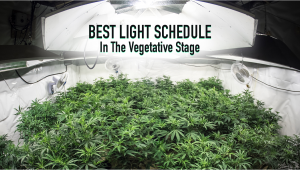
- 1. What is the light cycle in vegetative cannabis?
- 2. Light cycle for vegetative cannabis outdoors
- 2. a. Photoperiodic plants
- 2. b. Autoflowering plants
- 3. Light cycle for vegetative cannabis indoors
- 3. a. Photoperiodic plants
- 3. b. Autoflowering plants
- 3. c. Light spectrum for plants in the vegetative stage
- 4. Different light cycles
- 4. a. What about autoflowers?
- 5. In conclusion
The vegetative stage has the ability to prepare the plant to support the bud, while also making it grow more and more healthy. Failing to provide a good amount of light will result in an unhappy plant that will be more prone to diseases and bugs. The proper amount of light in the vegetative stage has the ability to prepare the plant to support the bud, while also making it grow more and healthier. Compared to the flowering stage, the vegetative phase seems quite bland at first appearance. After all, not many people get excited when looking at leaves compared to flowers dripping with THC-containing resin! However, veg is arguably the most important time in the cannabis seeds' growing cycle, and it sets the stage for the blooming period. During this time, plants grow thick and fast. Their roots spread throughout the growing medium, their stems become wider and stronger, and they put out a plethora of fan leaves in order to maximise photosynthesis and energy production. In order to get the best result possible during the vegetative phase, you need to make good decisions when it comes to lighting.
1. What Is The Light Cycle In Vegetative Cannabis?
Light is extremely important for plants in the vegetative phase because it’s what they use to photosynthesize and grow sturdy and healthy, so if they get more light, the more and better they grow. Generally, the most common marijuana vegetative stage light cycle is 18/6 (light/darkness) but it can be any combination of light and darkness (like 20/4, 19/5, 17/7) as long as they don’t get more than 12 hours of darkness per day as this will trigger flowering.
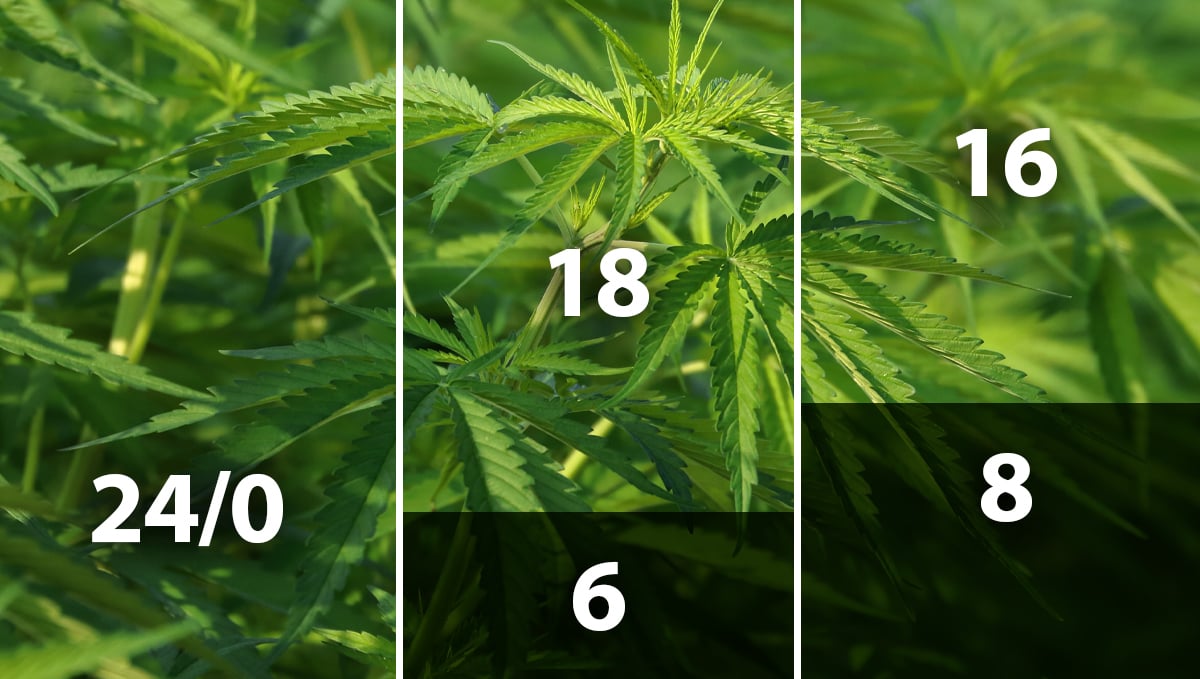
Have in mind that giving your plants less light will cause them to develop slower and if you’re not that experienced, you should follow the 18/6 light schedule and only give them more light (like 20/4) if you know your plant can take it. But in general, the most common light schedules for vegetating cannabis plants are:
- 18hrs of light and 6hrs of darkness for photos and autos;
- Or 20hrs of light and 4hrs of darkness, but strictly for autos.
Not always giving them more light is going to result in faster or more development and you can harm or really stress your plant by doing this, making them turn into hermaphrodites or showing other heat stress symptoms.
2. Light Cycle For Vegetative Cannabis Outdoors
Photoperiodic Plants
When growing outdoors, the light cycle will solely depend on the season you’re in. Each season has a different amount of light and dark hours, and this will hugely influence when you can start growing your photoperiodic cannabis plants.
For example, in California, we have the following light schedules throughout the year:
|
Winter
|
December (9 light/15 dark) | January (10 light/14 dark) | February (11 light/13 dark) |
|---|---|---|---|
|
Spring
|
March (12 light/12 dark) | April (13 light/11 dark) | May (14 light/10 dark) |
|
Summer
|
June (14.5 light/9.5 dark) | July (14 light/10 dark) | August (13 light/11 dark) |
|
Autumn
|
September (12 light/12 dark) | October (11 light/13 dark) | November (10 light/14 dark) |
This means that when growing outdoor you have to know the amount of light and darkness you will receive in the next couple of months so your plant develops the way you want to.
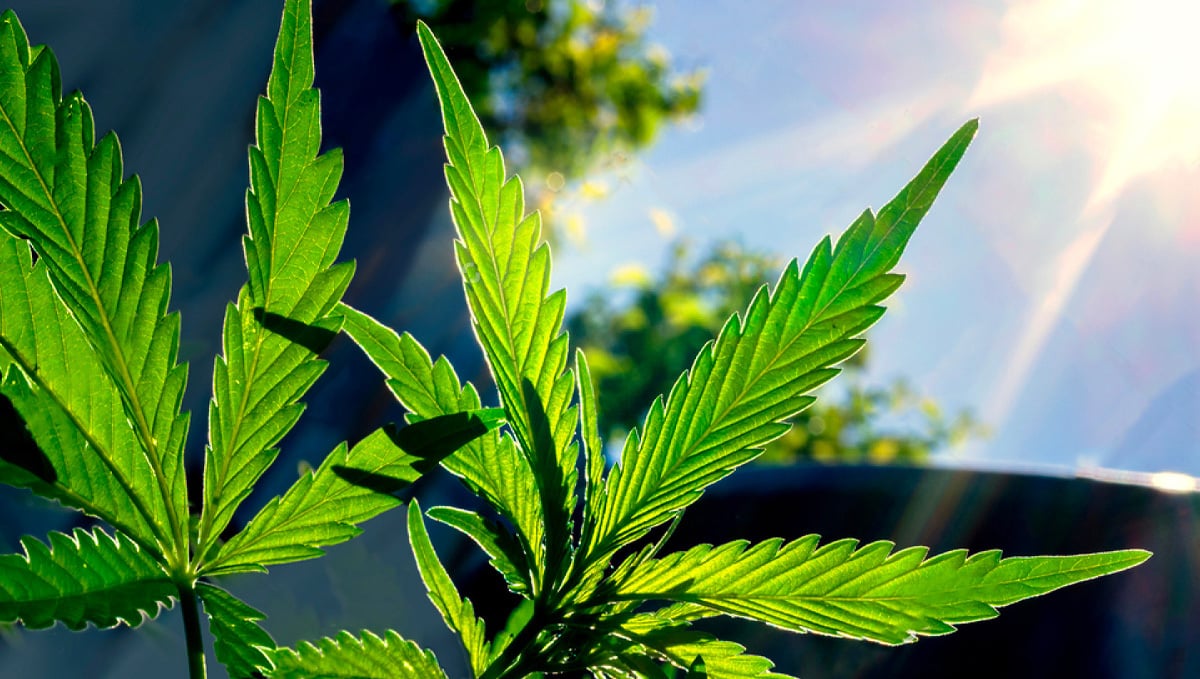
Note: Have in mind the information above is exclusive to California, you should get information about how is it in your area. That information can easily be found on the internet.
Autoflowering Plants
On the other side, autoflowering plants have a vegetative stage but start flowering automatically, not depending on a light schedule to do so. This means you can grow autoflowering strains outdoors all year long. Although the amount of light and other factors like humidity and temperature may have an influence on the development of your plant, they will definitely vegetate and develop properly outdoors at any given time, before flowering.
3. Light Cycle For Vegetative Cannabis Indoors
Photoperiodic Plants
As you may know, when growing indoors we are responsible for maintaining all the elements of the environment, in the beginning, it can be a little bit hard but when we get more experienced it can have various advantages.
Like we said above, photoperiodic cannabis depends solely on the amount of light and darkness to start flowering, which can be tricky for new growers outdoors but when growing indoors, we are in full control of everything, including the light schedule.
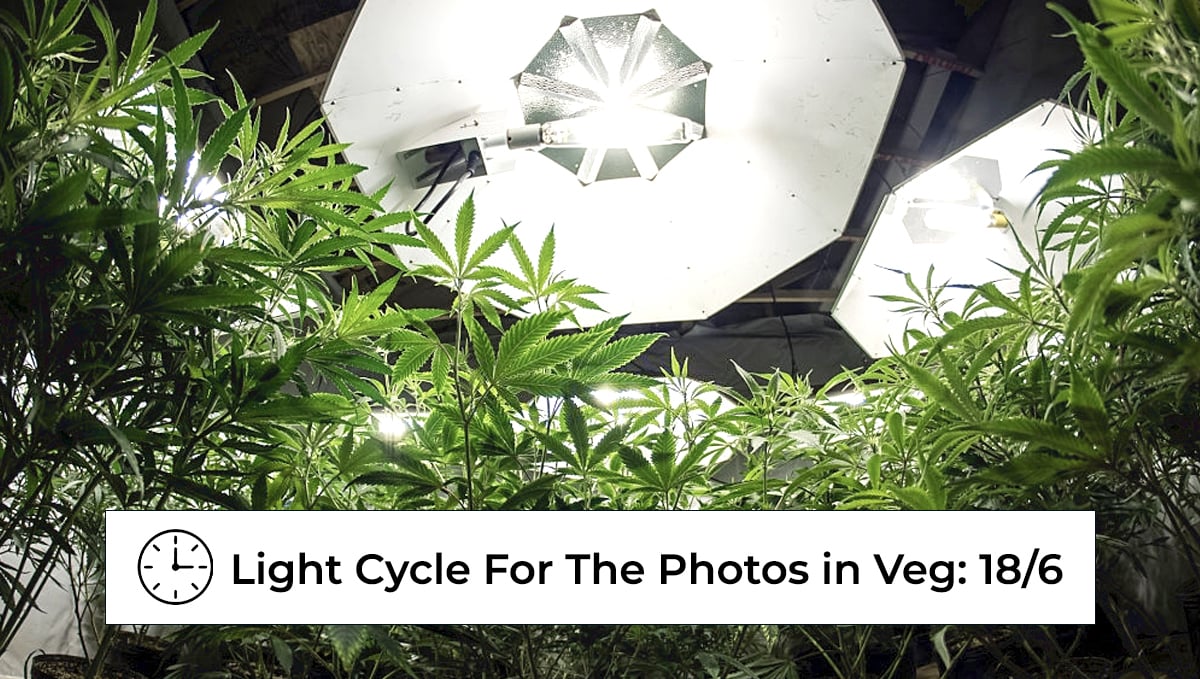
Unlike autoflowering cannabis, photoperiodic plants indoor can vegetate for a long time and will only flower when we change the light cycle. This allows us to vegetate our plants as long as we want and then flip them to the flowering stage when we have met our goals in the vegetative phase.
This is because photoperiod genetics developed in regions of the world with a long growing season. This luxury meant that they had ample time each year to grow big and tall before having to worry about reproduction. In order to know when to make this switch, these plants become sensitive to external light cycles. During the summer, they recognized long hours of light as a time to remain in veg. As the light cycle decreased, they responded by switching to flower in order to make seeds before the colder weather arrived. Therefore, when growing photoperiod plants indoors, growers have to reduce the light cycle to at least 12 hours on and 12 hours off to mimic this natural signal.
Autoflowering Plants
Autoflowering cannabis will flower independently of the amount of darkness they get. Obviously, giving them too little light like a 5/19 light schedule will make them seriously underdeveloped but they will flower either less.
More experienced growers can experiment with different light schedules, some growers even saying they got the best results by giving their autoflowers 24hs of uninterrupted light. We encourage you to experiment also, but be aware that too much or too little light may stress your plants.
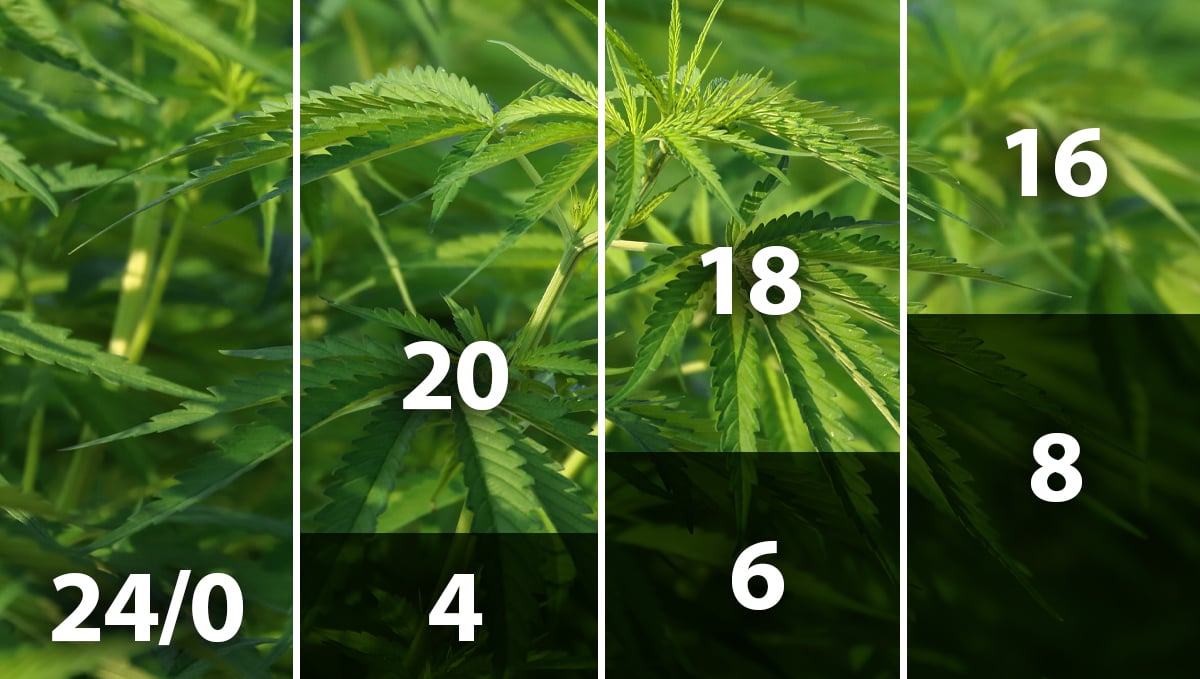
Different light cycles with autoflowering cannabis are also used to save electricity, by giving your plant a little bit less of light (like a 16/8) it will sum up to an important amount at the end of each cycle. Even though it can affect the yield, removing only 2hs of light per day shouldn’t make a big difference on the plant and can save you a couple of bucks.
If you are still new to growing cannabis and want to guarantee your harvest, start with an 18/6 light schedule, and after you get a little bit of experience, it will be easier to read your plant’s signs and you can start experimenting with other light schedules.
Light Spectrum For Plants In The Vegetative Stage
Apart from the light schedule, it’s also important that you provide the “correct” light spectrum for cannabis in the vegetative stage to grow as they should; Now, there isn’t a best light spectrum or the best led for vegetative growth because each spectrum and light fixture has its own effects on cannabis plants but there are definitely some that may be more useful than others depending on what stage your plant is in.
When growing outdoors, your plants are getting light from the sun which actually has a complete spectrum but, for example, during spring and summer it’s possible that your plant gets more of the blue spectrum due to the light taking a more direct path to reach your plants which promotes healthier green matter growth.
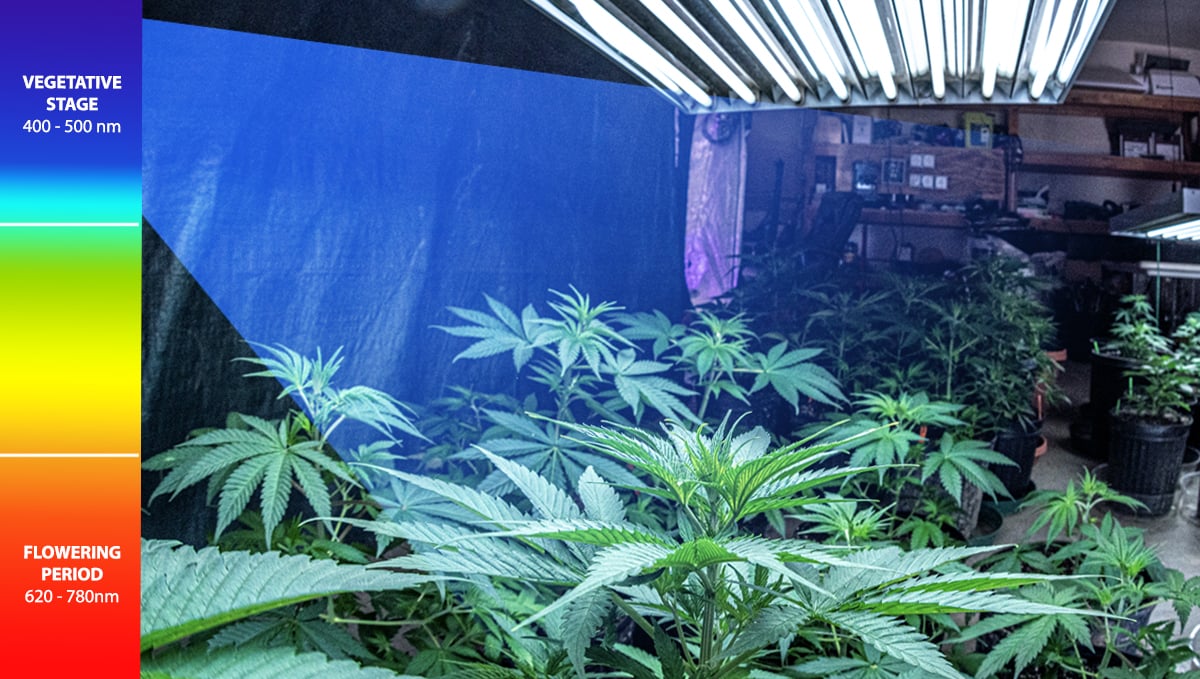
And, as fall approaches the sun is closer and as a result, your plants will get more of the red spectrum which promotes stretching and bud production; this means that by keeping track of the spectrum throughout the seasons you can plan your grow cycle to get the best plant growth possible, using the different spectrum to control how your plants grow.
But not all indoor light fixtures provide a full spectrum so if you’re an indoor grower, you will have to get either a full-spectrum LED or combine both MH and HPS light bulbs to get the ideal plant growth.
However, you don’t actually need to do this, you can grow your plants from seed to harvest under any light fixture as long the results are good enough for you; Even though it’s highly recommended, it’s not essential to provide a full spectrum to getgood plant growth, just have in mind that to get the best results you should provide a full spectrum and tune it according to your goal and the specific strain because all strains are different and they may grow slightly different under the same light spectrum.
4. Different Light Cycles
Growers usually grow under an 18/6 light cycle during the vegetative stage but some prefer a 20/4 light cycle, which also works great but it’s not recommended to provide 24 hours of light during the vegetative stage as it can stress certain strains. Keep in mind that the roots of cannabis plants grow and develop the most at night (or when the lights are OFF), so it’s important for you to give your plants at least 4 hours of darkness. Remember that you should only change to 12/12 once you feel your plants are ready for flowering as photoperiod cannabis strains will start flowering once the light cycle is changed to 12/12.
Once your plants are ready to start flowering, you can go ahead and adjust your timer to make the change from 18/6 or 20/4 to 12/12 but remember to do it at the start of the dark cycle, and check the lights are turning ON and OFF at the right time just to see if everything is working properly. After you’ve verified the timer is working correctly, it’s just a matter of waiting.
What About Autoflowers?
Autoflowers are different from photoperiods because they do not depend on the light cycle to trigger flowering. This can be a huge advantage as autoflowers will grow and flower under the same light cycle from seed, either 18/6, 20/4, or 24/0. This means you can have autoflowers in different growth stages growing in the same tent and you won’t have to worry about changing the light cycle or anything else but, on the other hand, you won’t be able to extend their vegetative stage if you want them to grow a bit more as autoflowers (as the name suggests) flower automatically, meaning that they start flowering based on their age. So always remember to know exactly how many hours of light and darkness your plant needs to avoid stress and potentially hermie plants!
5. In Conclusion
The cannabis vegetative light cycle is super important. In this stage, cannabis is building up strength to be able to support all the buds in the flowering stage. There's nothing as the best light cycle for the vegetative stage, the light cycle will depend on a lot of factors that are individual to each grow room. It is crucial that you give them the amount of light and nutrients they need so they can develop properly and be ready for the next stage. Even though it mostly depends on genetics, the amount of light your plant will be able to receive is a decisive factor in the amount and quality of flowers it will produce.
Just remember that all cannabis plants are different and what works for one specific plant may not result in the same plant growth and yields with another one, this is because the following elements will directly affect plant growth:
- Nutrients;
- Light spectrum;
- Substrate;
- And overall growing conditions.
Adjusting and controlling them closely is the best way to provide ideal conditions for your plants to grow but if you're looking to get the most out of every single plant you should adjust the growing conditions according to how your plants react, and this can even happen with plants from the same seed pack because, as mentioned, all plants are different.
Even if you're feeding good quality nutrients and growing under a full-spectrum LED your plant may still underperform or just not reach your goals; You can definitely start with the same base for all your plants but make sure you adjust every aspect of the growing environment, from the substrate to temperature (when possible), this will allow you to get the best results and you will see a huge difference not only in plant growth but in yields and trichome production so whenever possible, try to get to know your plants and how they grow, this is the only way to go from a good harvest to a perfect one. If you don't know which one to follow, we recommend providing a 18/6 light schedule for your cannabis plants in the vegetative stage as this cycle has been proved by a lot of growers to work really well, allowing the plant to develop properly.








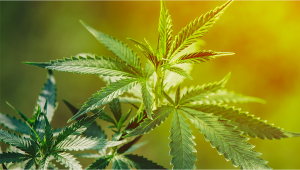
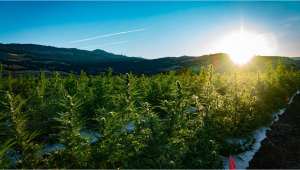
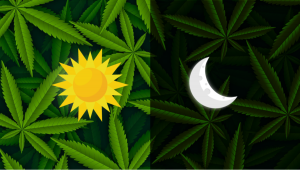
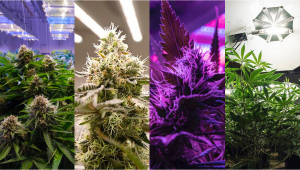


Comments